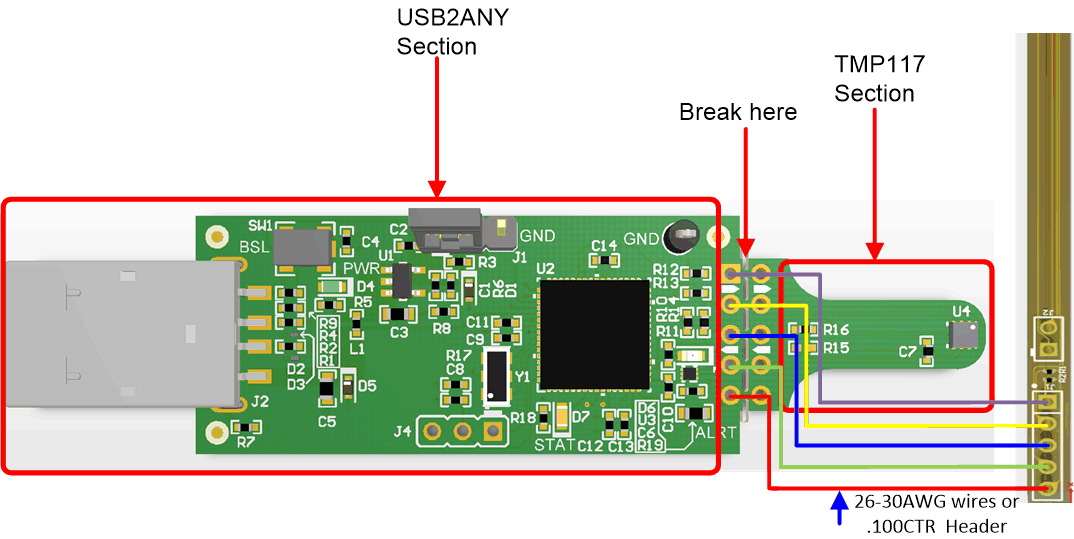TIDUEX1A December 2020 – March 2021
3.1 Hardware
The hearable flex board and a separate MCU are needed to test the design. The headers for the MCU were made to align with the headers on the TMP117EVM. The TMP117EVM can be broken into two sections: one with the TMP117 and the other with the USB2ANY as shown in Figure 3-1.
The USB2ANY portion can be used to communicate to both TMP117 devices using the TMP117DualSensor_GUI which can be found at the Texas Instruments Gallery. The main sensor's 7-bit I2C address is 0x49 and the secondary sensor's 7-bit I2C address is 0x48.
 Figure 3-1 Connecting to
TMP117EVM
Figure 3-1 Connecting to
TMP117EVM